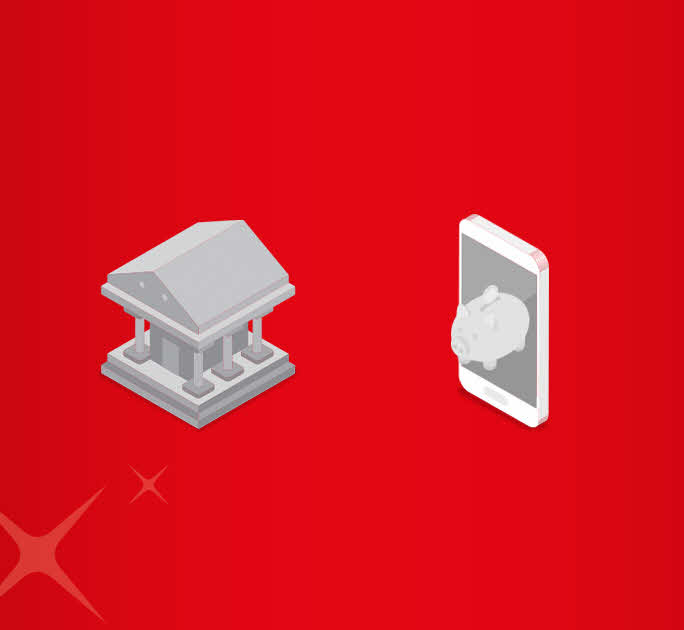- Save
- Invest
- Borrow
- Pay
- More
- Customer Services

What is an IFSC Code? Meaning, Format, Finder & How to Check
Importance of IFSC Code in making online money transfers
Key Takeaways
- An IFSC Code is an 11-digit alpha-numeric code assigned to all bank branches by the Reserve Bank of India.
- The IFSC Code is mandatory for any online fund transfer through RTGS, IMPS or NEFT.
- An IFSC Code is unique, and no two branches of any bank can have the same code.
- Transferring funds with IFSC Code is secure, convenient and hassle-free.
- The RBI can track all electronic transactions in the financial and banking system with the IFSC Code.
When you initiate online fund transfers, you have to provide the basic details of beneficiaries such as their name, bank and branch names, bank account number and IFSC code. While the former credentials are self-explanatory and easy to obtain from beneficiaries, the latter is a unique code that plays a crucial role in online fund transfer transactions. Let us understand what is IFSC code of bank.
What is IFSC Code? Full Form and Meaning
The Reserve Bank of India allocates an 11-digit alpha-numeric code to all bank branches, referred to as the Indian Financial System Code (IFSC Code). The IFSC code meaning lies in its role as a unique identifier that enables accurate routing of transactions to the correct bank branch.
The IFSC Code is mandatory for making an online fund transfer through Real Time Gross Settlement (RTGS), Immediate Payment Service (IMPS) and the National Electronic Fund Transfer (NEFT).
Each code is unique, and no two branches will ever have the same code. Banks also rely on a 9-digit unique code called Magnetic Ink Character Recognition (MICR Code) to identify bank and bank branches in the ECS for fund transfer via cheque. An IFSC code example is the Nariman Point branch of DBS Bank, which has the code DBSS0IN0811.
Components of an IFSC Code
An IFSC Code is an 11-character identifier used for electronic fund transfers in India. It is structured in three parts:
First Four Characters (Bank Code)
These letters identify the bank. In the example above, DBSS stands for DBS Bank.
Fifth Character (Zero)
This is always a zero. It is reserved by the Reserve Bank of India for future use.
Last Six Characters (Branch Code)
These alphanumeric characters identify the specific branch. In this case, IN0811 refers to the Nariman Point branch. Knowing the format makes it easier to recognise or verify a code when you need to perform an IFSC code check before making a transfer.
If you plan to send or receive money online, you will need a valid savings account with an active IFSC code. You can open a bank account online with DBS Bank in minutes to start making secure digital transactions.
Benefits of IFSC Code in Banking Transactions
- IFSC Code helps to facilitate the electronic transfer of funds, making it secure, convenient and hassle-free.
- It facilitates paperless money transactions.
- It allows quick validation and reconciliation, making an IFSC code check important before initiating transfers.
- FSC Code plays a crucial role in maintaining communication between the sender and the recipient and can also help you find branch by IFSC code when required.
With the IFSC Code, the RBI can manage and track all electronic transactions in the financial and banking system.
How to Check or Find IFSC Code?
You can find your bank branch’s IFSC Code through the following methods:
- Cheque Book - The IFSC Code is printed on the first page of your cheque book along with your name and account details. It is usually located on the lower middle section of each cheque leaf, and can also help you get the MICR code from IFSC code if needed
- Bank Passbook - Your bank passbook and account statements also display the IFSC Code, typically near your account information.
- Net Banking or Mobile App - Most banks display the IFSC Code for your account on their official internet banking platform or mobile application. Some banks also provide an option to find IFSC code by account number directly within their services.
- RBI Website - The Reserve Bank of India’s official website lists the IFSC Codes of all bank branches in India. You can search by bank name and branch location.
- IFSC Code Finder Tools -Several online tools allow you to search for an IFSC Code by entering the bank and branch name. These can also be used to find the code for a beneficiary’s bank branch.
Knowing your branch’s IFSC Code also ensures smooth transactions, helping you manage your account efficiently. If you are looking to optimise your earnings, it is worth checking bank savings interest rates. For example, a DBS Bank savings account offers interest rates as high as 5.5%, helping you grow your balance while enjoying secure and convenient banking.
Importance of IFSC Codes in Banking Transactions
The IFSC Code ensures that funds are transferred accurately to the intended bank branch. It plays a crucial role in online transactions such as NEFT, RTGS, and IMPS by:
- Identifying the bank and branch so payments reach the correct destination, making it easier to find branch by IFSC code if required.
- Preventing errors in fund transfers by acting as a unique branch identifier, which is why an IFSC code check can help avoid mistakes.
- Enabling quick processing of domestic and international payments.
- Supporting regulatory compliance by providing a standardised code recognised by the Reserve Bank of India.
Without the correct IFSC Code, your transaction may be delayed, rejected, or credited to the wrong account
IFSC Code vs MICR Code: Key Differences
IFSC and MICR codes both play important roles in banking operations but serve distinct purposes. The table below highlights their key differences.
|
Feature |
IFSC Code |
MICR Code |
|
Purpose |
Used for identifying bank branches during electronic fund transfers. |
Used for identifying bank branches during cheque processing. |
|
Format |
11-character alphanumeric code. |
9-digit numeric code. |
|
Usage |
NEFT, RTGS, and IMPS transactions. |
Speeding up cheque clearance through magnetic ink recognition. |
|
Issuing Authority |
Reserve Bank of India. |
Reserve Bank of India. |
While both IFSC and MICR codes help in banking operations, they serve different purposes, with the IFSC code primarily used for routing online fund transfers and the MICR code used for processing cheques efficiently. In some cases, you can also derive the MICR code from IFSC code using official bank resources.
Final Note
ISFC codes are crucial to electronic funds transfers, and so you must ensure you enter the correct code during the fund transfer process. Entering the wrong code may result in your funds getting credited into the wrong account, or the transaction may fail to go through.
Get started with seamless money transfer with DBS Bank. Download the app now and send money to your family from anywhere and even open your savings account with us!
*Disclaimer: This article is for information purposes only. We recommend you get in touch with your income tax advisor or CA for expert advice.










